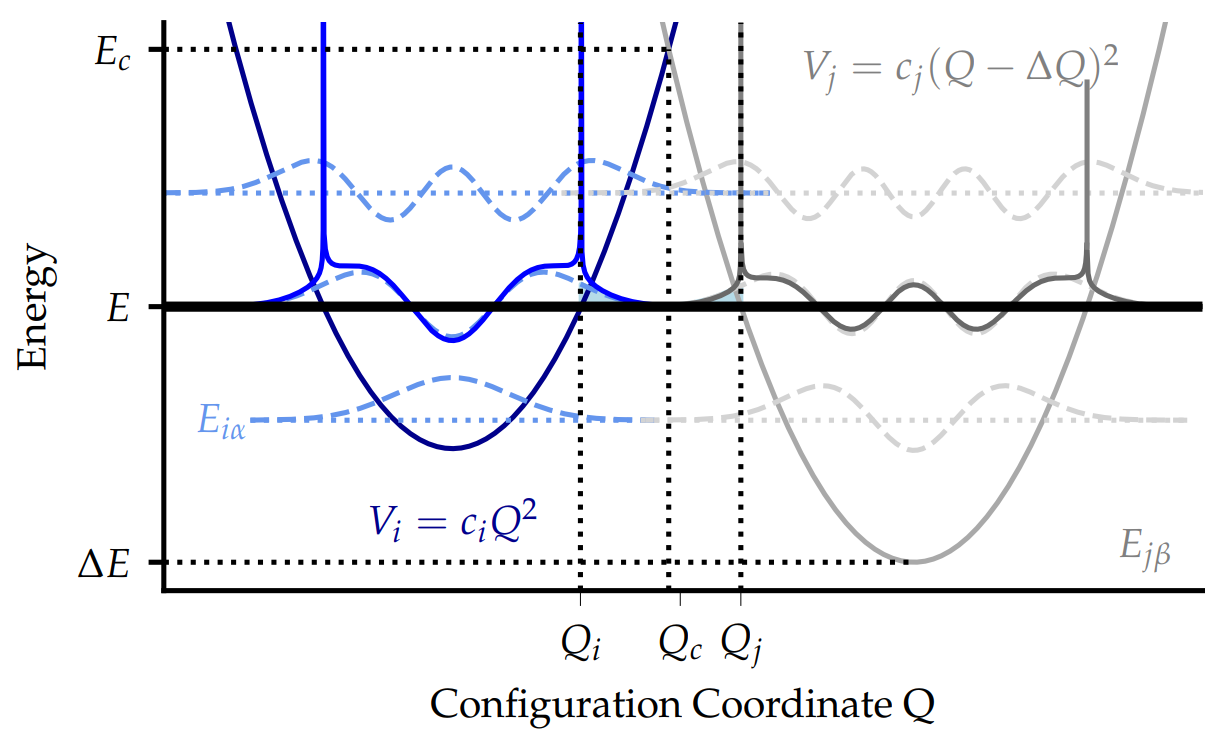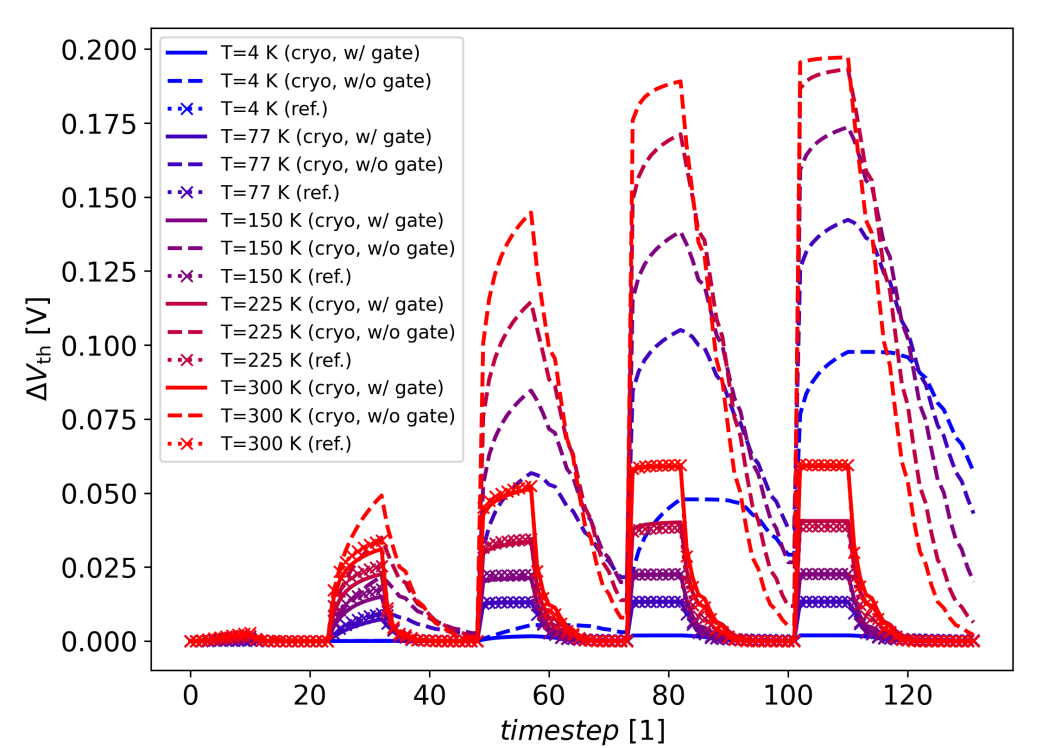In principle it would be necessary to use the full quantum mechanical version of the 2-state NMP model for cryogenic modeling. However, the computation of the full quantum mechanical transition rates is numerically expensive, because it requires to compute the eigenstates of the potential energy surfaces and the corresponding overlap functions. One approach to solving this issue is to replace the vibrational wave functions of the full quantum mechanical 2-state NMP model by their respective Wentzel-Krammer-Brillouin (WKB) approximations, as shown in Fig. 1:

For further numerical improvement a model based on the assumption of linear coupling \( (𝑅 = 1) \) was implemented in Comphy. For \(𝑅 = 1\), the curvatures of the vibrational wave functions do not change upon charge trapping, implying that the effective phonon frequencies are also the same in both defect charge states \( ( \omega_i=\omega_j=\omega) \). In this case, it is possible to use an analytic expression for the quantum mechanical transition rates in the strong electron-phonon coupling regime at cryogenic temperatures. This approach leads to the following transition rates \( k_{ij} \): \begin{equation} \begin{aligned} k_{ij}(T) = \omega \frac{\sqrt{2\pi}}{2D\hbar} \bigg[ & (1 + \coth \alpha) \exp \left( \frac{-E_\mathrm{-}}{2D^2\hbar^2} \right) \\ & - (1 - \coth \alpha) \exp \left( \frac{-E_\mathrm{+}}{2D^2\hbar^2} \right) \bigg] \end{aligned} \end{equation} with the abbreviations \( D = \sqrt{ \omega E_\mathrm{R} (2n+1)/\hbar} \), \( n = 1/(\exp(\hbar \omega/k_\mathrm{B}T)-1) \), \( \alpha=\hbar\omega/2k_\mathrm{B}T \), \( E_{\pm} = \Delta E \pm \hbar \omega - E_\mathrm{R} \) and \( \omega = \sqrt{ 2 E_\mathrm{R}} / \Delta Q \).
This closed form expression for linear coupling gives the same results as the full quantum mechanical model over a wide temperature range, but its evaluation requires a comparable computational effort as the classical approximation. Thus, it is well suited for efficient reliability simulations with thousands of defects in a device.
| |
|
| |
|
| |
|
| |
|
SiO2_shallow_trap_band = TrapBand_2S_NMP_QM(
| |
|
| |
|
| |
|
| |
|
| |
|
| |
|
| |
|
| |
|
| |
|
| |
|
| |
|
| |
|
my_device.trap_bands[
For example Fig. 2 shows a comparison of a BTI simulation performed with classical and quantum mechanical trap bands. The results show that the classical reference freezes out completely, while the cryogenic rates allow for some charge trapping even at 4K. It should be noted that turning on gate interaction can have a drastic impact on trapping kinetics and therefore usually requires re-calibration of the defect bands across all temperatures.
